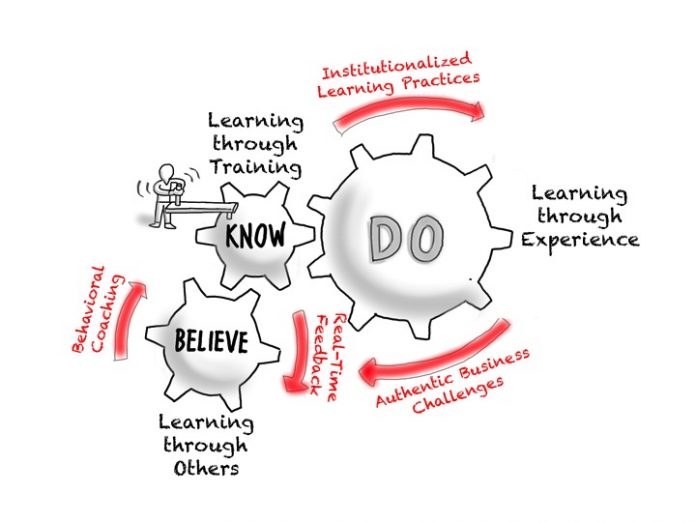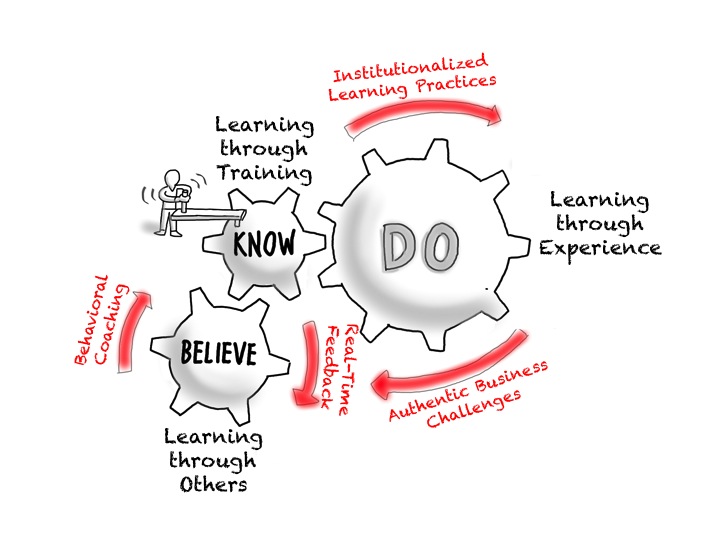
Many industries run on heuristics: rules of thumb that curious and insightful pioneers have studied in depth and simplified into succinct formulas, rules, or ratios that become part of the vernacular in a given sector.
In this respect, the training industry is no different. Thanks to thought leaders such as Alan Tough, Michael Lombardo, Robert Eichinger, Gloria Gery, Jay Cross, and Charles Jennings, the 70-20-10 ratio has become part of the lingua franca of learning.
According to the ratio, 70 percent of learning happens through work experience. Some 20 percent comes from learning through others who are kind enough to provide us with feedback and guidance as we climb our professional learning curves. That leaves a mere 10 percent allocated to formal training activities.
DON’T LEAVE IT UP TO CHANCE
The 70-20-10 ratio often is depicted as a continuum or scale where 90 percent of the learning that happens in the organization is categorized as informal and the remaining 10 percent is reserved for the formality of the classroom.
But as Peter Henschel, former executive director of the Institute for Research on Learning, put it: “If more than two-thirds of the learning in organizations happens informally, can we afford to leave it up to chance?”
In recent work with clients, we have found it beneficial to reframe the 70-20-10 ratio by depicting it as a development system with three learning gears that represent the different learning contexts.

The first, and smallest, gear represents what people must know in order to perform and is achieved by learning through training. The second, and biggest, gear represents what people must do in order to perform and is achieved by learning through experience. The third gear represents what people must believe in order to perform and is achieved by learning through others.
In representing the 70-20-10 ratio as a set of gears within a larger developmental system, we can start to explore the key linkages between each of the distinct learning contexts defined by the ratio. More important, in this rendering of the ratio, the fact that the training gear is the smallest creates a leverage point that can engage the two other learning gears within the development system.
ENSURING OPTIMAL SYSTEM PERFORMANCE
The key to ensuring that the development system stays in gear and delivers optimal performance lies in asking six critical questions:
1. What must performers do more, better, or differently to improve their performance?
2. What kinds of practices and routines must be institutionalized in the workplace to achieve and sustain the desired performance?
3. What do the performers need to know to perform at peak levels?
4. What authentic problems or challenges can you, the L&D professional, bring from the workplace into the classroom to better contextualize formal training activities?
5. From whom do the performers need to receive real-time feedback on their work performance and how will it be delivered?
6. What kinds of assessments and coaching are required to enable performers to recognize the role their behavior plays in improving individual and organizational performance?
By reframing the 70-20-10 ratio as a system, we can ensure that learning through training becomes a flywheel in developing the capabilities required to drive performance.
Tony O’Driscoll is regional managing director of Duke CE in Singapore, where he focuses on identifying and implementing next-generation learning strategies and approaches that accelerate the development of Leadership Sense- Abilities in this rapidly growing part of the world.

